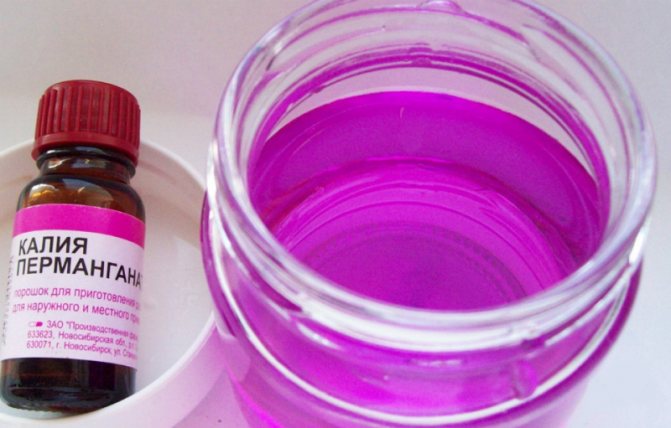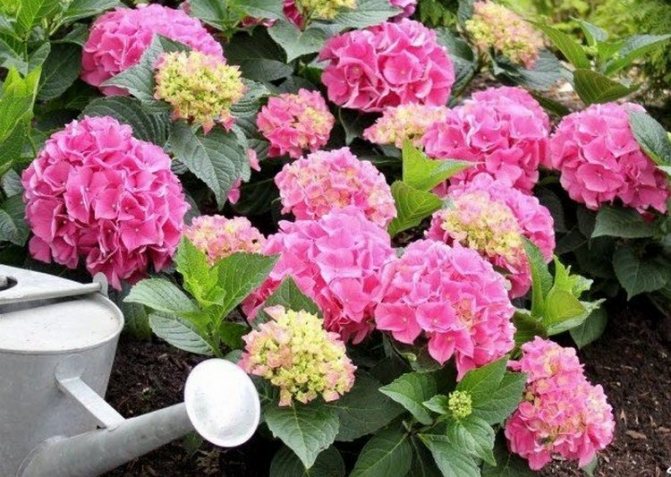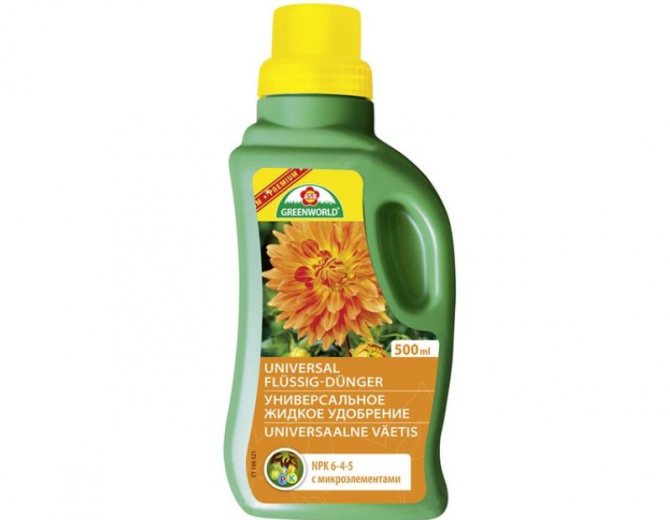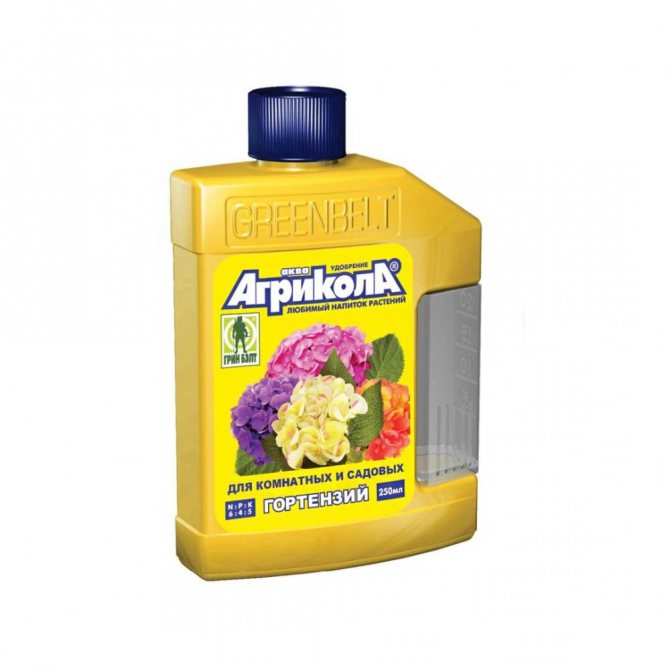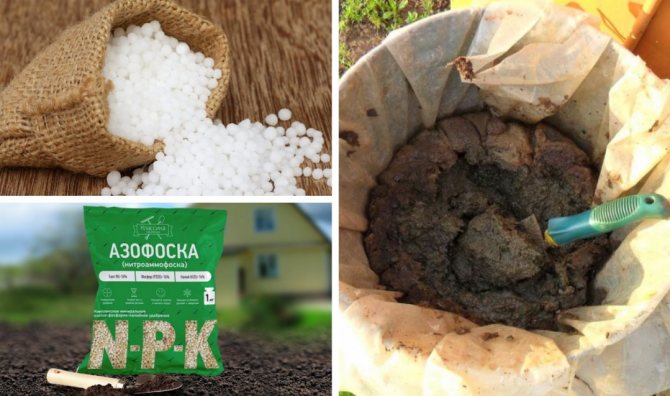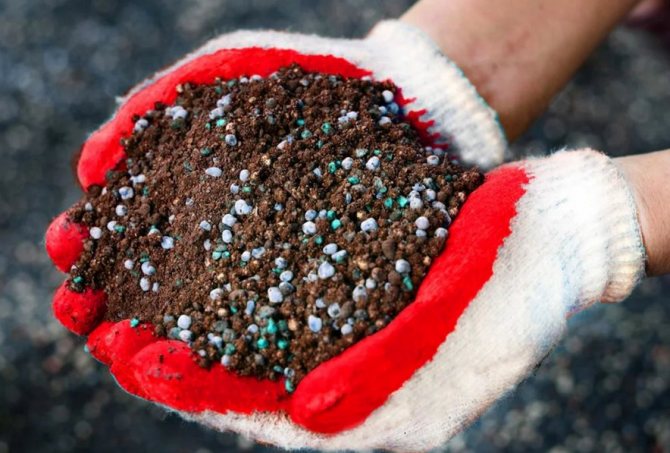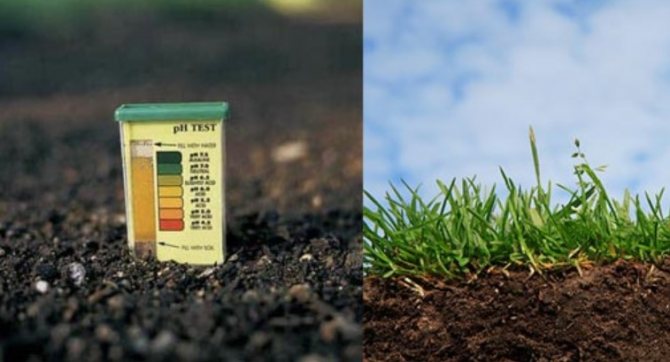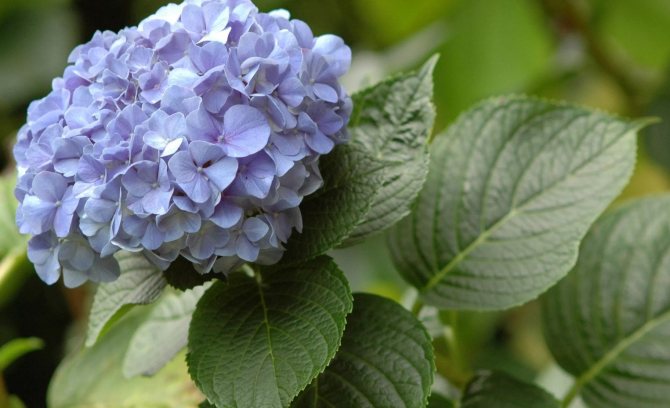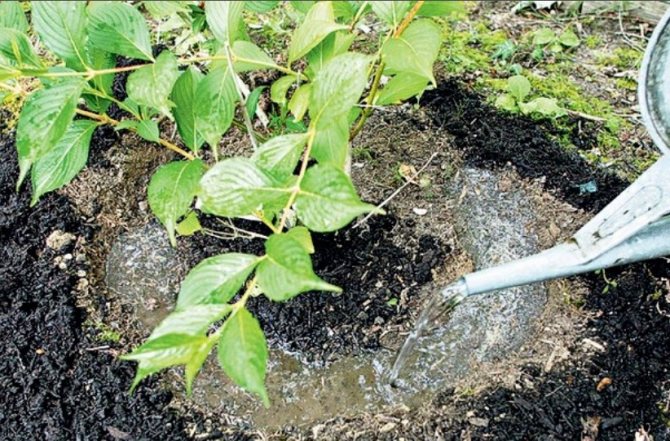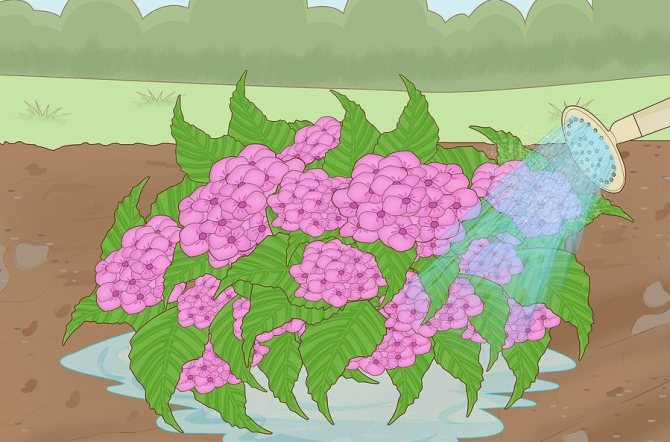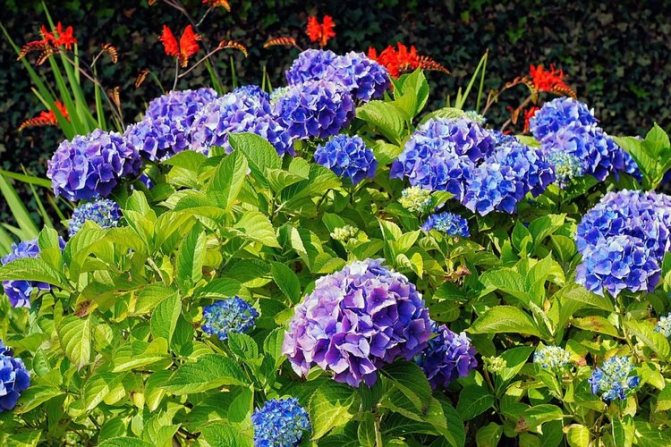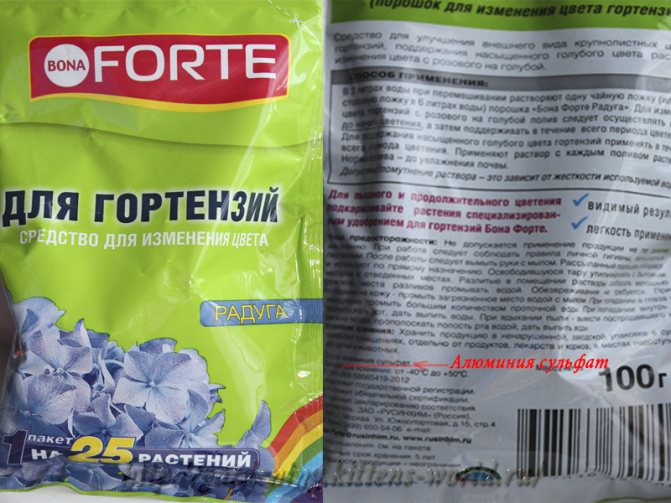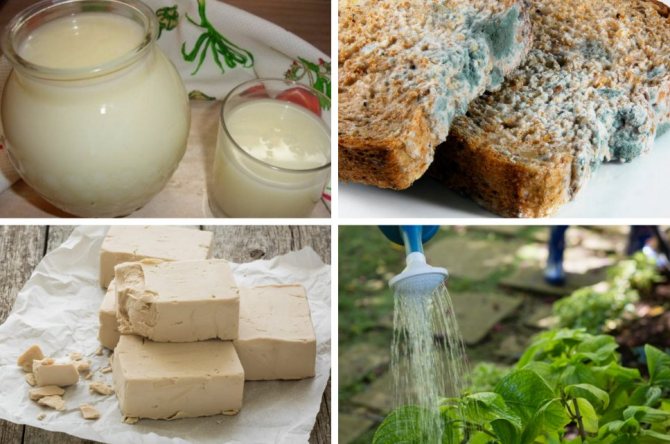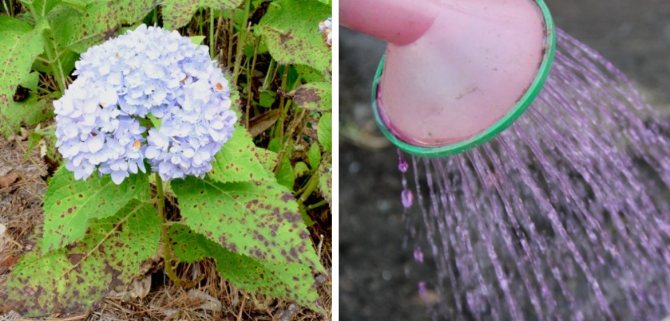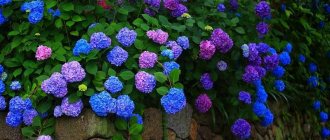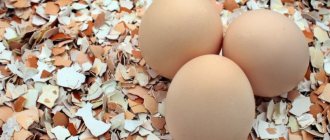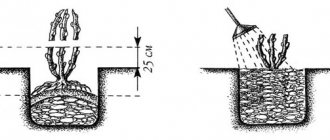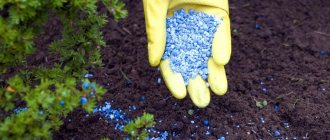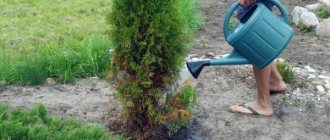Hydrangea is a flowering shrub whose charming flowers have bright, beautiful colors. It was brought to Russia from Asia. This plant belongs to the class of dicotyledons. Blooms from early spring to late autumn. Flowers are collected in inflorescences. These adorable white, cream, purple, blue or red balls are simply impossible to take your eyes off. Inflorescences can be in the shape of an umbrella or panicle. The fruit is a capsule containing small seeds. The plant is in the form of shrubs, less often in the form of a tree or liana. And her color is often white and pink, although the shade can really change. The juice of large-leaved varieties contains the pigment delphinidin 3-monoglycoside. When combined with many substances, complex chemical reactions occur, due to which the color of the inflorescences can change.
For your information! Another name for this flower is hydrangia. Translated from the Greek hydor is water, angeion is a vessel. Hydrangea is very hygrophilous, which is why it got this name. Another version is that it was named so due to the fact that the boxes look like a vessel.
Top dressing calendar
During planting, 1 glass of superphosphate and 30 g of potassium sulfate are introduced, 30 g of ammonium sulfate is additionally introduced during planting in the spring. Further feeding is not carried out for 2 years, then organic and mineral feeding is alternated.
When and how to feed:
- nitrogen fertilizers are applied from spring to mid-summer once every 2 weeks;
- do not use nitrogen from mid-July;
- water the entire bush with a manganese solution (0.2 g per 1 liter) once a month - it strengthens the tissues well;
- the formation and growth of buds require the introduction of potassium sulfate and superphosphate (40 and 60 g per 10 l);
- feeding is stopped at the end of August.
If it is impossible to apply fertilizers on a regular basis, it is recommended, after freeing the soil from snow, to apply complex fertilizer granules, deepening them. The consumption will occur gradually, providing the plant with food for the entire, and sometimes more than one, season. Then mineral fertilizing is no longer necessary.

When to fertilize hydrangea in spring
In the spring, at least 2 feeding of hydrangea bushes is carried out. For the first time, plantings are fertilized after the snow melts and the soil thaws. In the conditions of the middle zone, this occurs in early to mid-April. During this period, emphasis is placed on nitrogen-containing fertilizers.
The second feeding falls on the stage of bud formation. At this time, the hydrangea is fed with potash and phosphorus compounds. Complex fertilizers have proven themselves well.
Additionally, you can feed the hydrangea 2-3 times with a manganese solution in the spring. This substance will help to strengthen the wood tissue.
Important! In case of using industrial mixtures in spring, the recommended dosages should be strictly observed. Over-saturation of the soil with one or another element will not benefit the plant.
Types of mineral dressings
For the introduction of minerals, fertilizing with several fertilizers with one basic substance or fertilizers with a complex of substances is suitable. Complex fertilizers are more convenient to use - the doses have already been calculated in the instructions.
Complex fertilizers options:
- Fertika - in liquid form, apply 1 time in 2 weeks while growth is in progress, the granules are applied under the bush up to 2 times per season;
- Pokon works for a long time, use a one-time soil application in the spring;
- GreenWorld is applied up to 2 times per season for abundant bud formation, long bloom and vibrant color.
Ammonium sulfate (60g), potassium sulfate (15g) and superphosphate (20g), diluted in 10 liters, have an effective effect during the growing season (May-June).
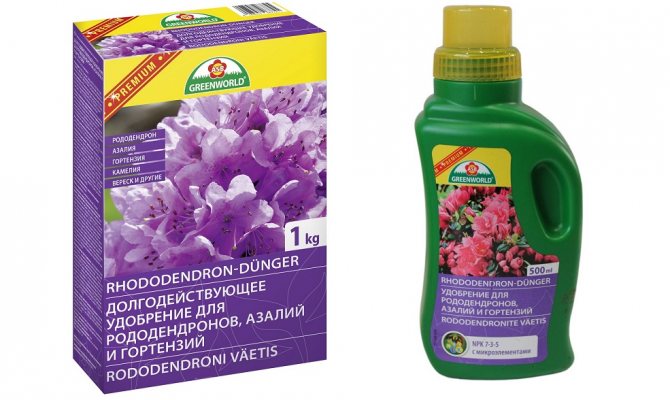

General recommendations and important nuances
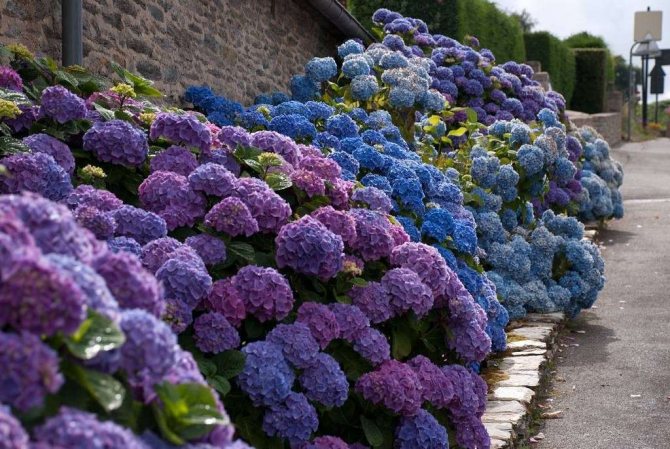

You should start feeding hydrangeas from the age of three.
Hydrangeas should be fed throughout the season (spring-autumn). But it is recommended to start carrying out the procedures not earlier than 2-3 years after planting the plants in open ground. Fertilizers need to be applied to a pre-moistened soil.
It should be remembered that an excess of nutrients is harmful to these shrubs much more than a lack of them. For this reason, it is necessary to strictly observe the dosage and adhere to the general application scheme.
There is a general scheme for feeding hydrangeas, but there are some important nuances, namely the shade of the flowers and the appearance.
Influence of dressings on the shade of flowers
If desired, the shade of hydrangea flowers can be changed by making certain dressings. To get bluish flowers, you should additionally feed the pink species with a weak solution of ammonia alum at the rate of 4 g per 1 liter of water. In this case, the introduction of reddish peat into the soil will help to consolidate the obtained result.
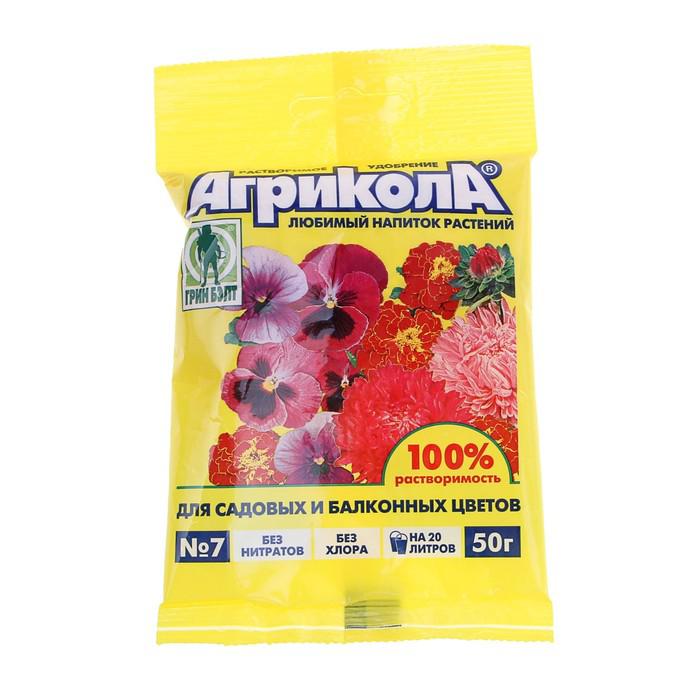

To obtain flowers of a rich pink hue, you should additionally feed the hydrangeas with Agricola for garden and balcony flowers.
In order for the pink inflorescences to become more saturated, they will need to be fertilized with potassium permanganate or Agricola for garden and balcony plants.
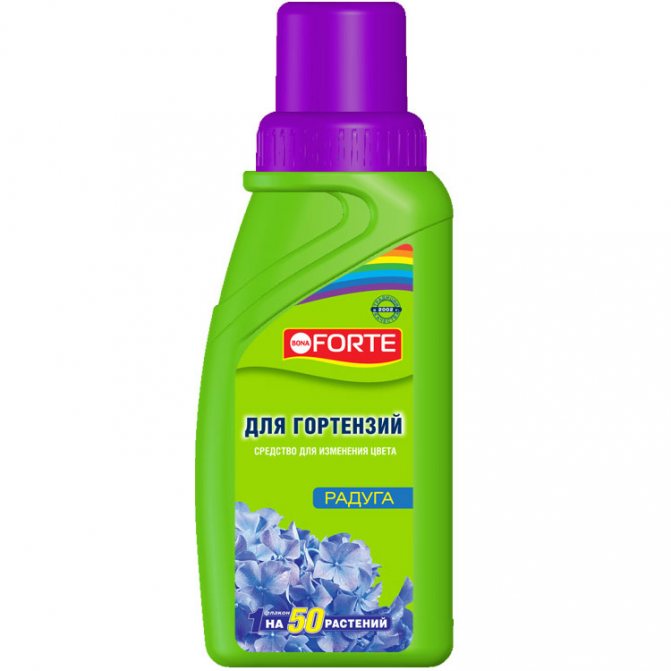

Bona Forte will help you to change the shade of flowers
In flower shops, a specialized color-changing agent Bona Forte is sold in the form of a liquid and a powder. This finished product is much easier to use to change the shade of hydrangea flowers.
It should be remembered that if initially the hydrangea flowers are white, it will not be possible to change their shade.
Video: how to change the color of a hydrangea
Features of feeding different types of shrubs
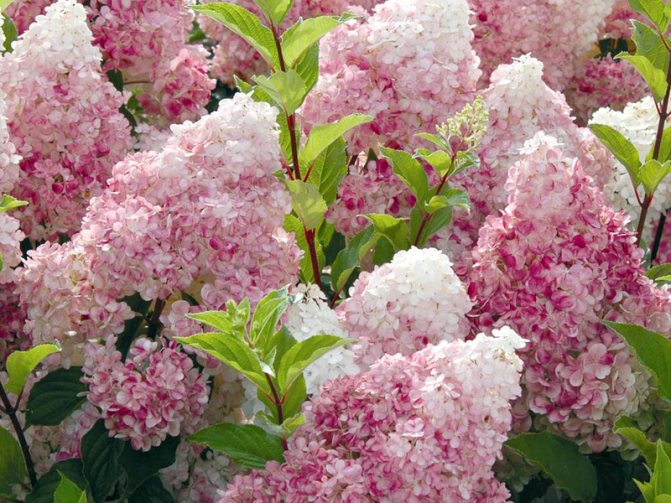

Spring feeding is most important for panicle hydrangeas
Each variety of this perennial shrub has certain characteristics that are recommended to be taken into account when feeding. For example, spring procedures are especially important for paniculate species. Such varieties respond well to organics. At the same time, dolomite flour is not suitable for them as a fertilizer.
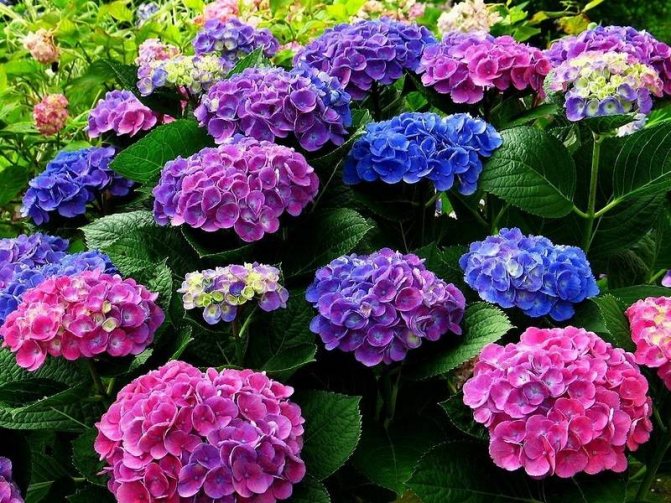

It is advisable to fertilize tree hydrangeas with manganese solution
Treelike hydrangeas are fed according to the general scheme. But in addition, it is recommended to fertilize them several times per season with a manganese solution so that the shoots are more flexible and hardy.
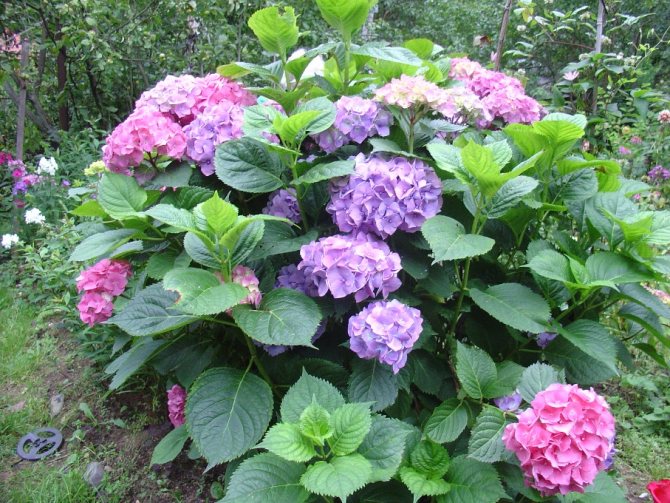

Large-leaved hydrangeas should be started to feed already in early spring.
Large-leaved hydrangeas require additional feeding at the beginning of the spring. As soon as the snow melts, it is recommended to fertilize the plants with a mixture of urea and potassium sulfate. Such feeding will help prepare shrubs for the growing season.
Organic fertilizers
It is not recommended to use organics all the time. The best option is to alternate it with mineral supplements. The choice depends on your capabilities - it is not always possible to find dung or mullein.
Organic dressing options:
- Manure infusion: add water (3 parts) to manure (1 part) and keep in the shade for a week. For watering, use a solution of 1:10.
- Infusion of mullein: fill the container by a third of the volume with fresh mullein and add water to the full volume. The cooking time depends on the composition of the mullein. Most often, the process takes 5-7 days. The infusion for irrigation is diluted in a ratio of 1:10. Top dressing is applied in the grooves dug at a distance from the stem.
- Infusion of greens: put the weed in any container, fill it completely with water and leave warm for fermentation. When the foam disappears from the surface, the infusion is ready. Dilute for watering 1:10.
- Biohumus preparation in solution.
- The introduction of humus under the bush in the fall will protect against frost, and in the spring it will replenish the soil with nitrogen.
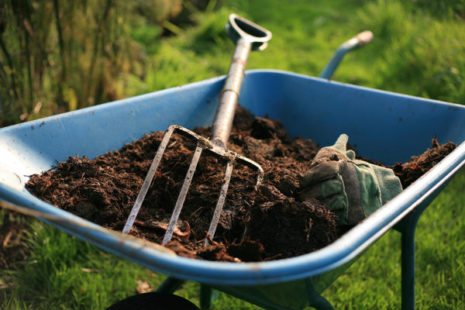

Information! Ash alkalizes the soil, so it is not recommended to use it - hydrangea loves an acidic environment. It can only be used to deoxidize the soil.
Planting pit for hydrangea
When you prepare a planting hole for your seedling, you also need to make sure that there is enough nutrition to the hydrangea roots. This is done as follows:
- first, you need to dig a deep hole about 60 x 60 in size. Its depth should be at least 50 cm;
- this hole needs to be filled up to half with a nutrient mixture, which will include humus, foliage, peat and pine needles. Pour about a bucket of water into this mixture, then mix thoroughly and leave for about a day;
- trim the horses and shoots of your seedling to make it easier for him to adapt to the site;
- putting it in the prepared planting hole, cover it with loose soil in such a way that the root collar of the seedling is not buried - it should be level with the ground;
- water the seedling properly with warm, settled water;
- pour peat on top of the soil in a dense layer so that nutrients get to the roots of the hydrangea when watering.
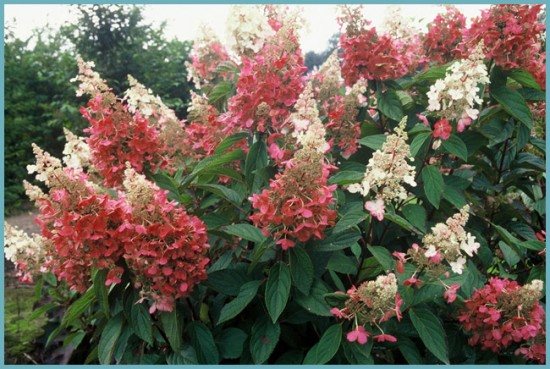

For such a preparation of the planting pit and planting a plant, the seedling will have enough fertilizers in the process of rooting and the growth of new shoots.
Fertilizers in the spring at different periods of growth
The time of fertilization affects their composition and dosage. The combination of feeding components affects the abundant long flowering, the beautiful appearance of the bush and the resistance to diseases.
Top dressing in spring
With the onset of warmth, the hydrangea begins to grow intensively, builds up the green mass, buds are laid, and this requires nitrogen. Potassium sulfate and urea (1 tbsp. L. Per 10 liters) will fill its deficiency, the consumption rate is 0.5 buckets under a bush. As a nitrogen supplement, a 1:10 slurry solution is very effective.
When buds are formed, phosphorus-potassium fertilizers are needed: ammonium sulfate (60g), potassium sulfate (15g), superphosphate (20g) per 10 liters. Consumption per plant - 2-3 buckets.
Table: Signs of Nutrient Deficiency
| Name of substance | Deficiency signs |
| Iron | The plant develops chlorosis, due to which the leaf plates turn pale |
| Potassium | At the edges, hydrangea leaves begin to turn yellow, and dark spots appear on their surface. |
| Nitrogen | Leaf plates turn yellow, the plant lags behind in development |
| Phosphorus | Leaves turn purple |
How to change the color of a hydrangea
The ability of hydrangea to change the color of flowers attracts flower lovers. The color tone is set by anthocyanins - substances in the composition of cell sap. They change when they react with metal ions contained in the soil, which entails a change in the color of the inflorescences. Neutral or alkaline soil (pH = 7-8) gives flowers pink color, acidic (pH = 2-4.5) environment makes them blue or blue-violet, slightly acidic soil (pH = 5-6) makes flowers white.
Information! Garden (large-leaved) hydrangea contains more anthocyanins than other species, therefore it easily changes color.
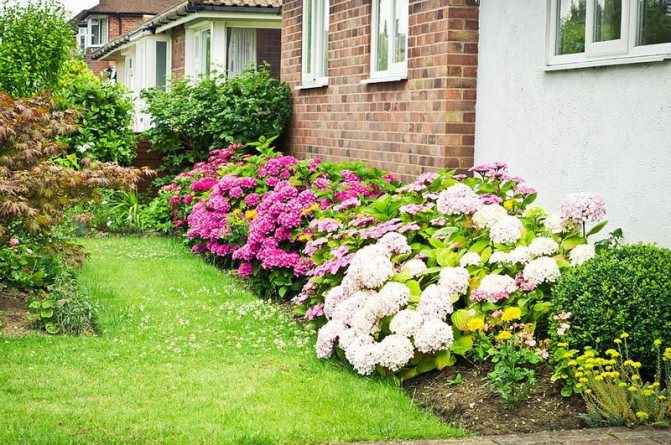

To find out the acid composition of the soil, litmus, an indicator of acidity, will help. It is sold in pharmacies, in stores, it is simple to use. The acidity of the soil is regulated, and it can be changed by the introduction of certain substances.
General rules for fertilization:
- observe the required dosages;
- do not feed sick and weak plants;
- apply fertilizers to wet soil;
- the acidic environment is supported by mulch from peat, pine bark;
- expanded clay, marble chips are not recommended for mulching.
Getting a blue color
In slightly acidic soil (pH = 5-6), metal salts are contained in a soluble form and are well absorbed by the plant. At pH ≥ 5.5, transitional colors with purple hues appear.
What to do:
- Add dry aluminum sulfate to the soil - up to 0.5kg per 1m². In a solution (30-40g per 10l), water at least once every 1-2 weeks. Potassium alum is used in the same proportion. For an adult bush, 2-3 buckets of solution are needed.
- The acidity of the soil under the bush can be increased to the required values during planting by adding high moor peat or elemental sulfur.
- To maintain the resulting color, apply fertilizers, where potassium is significantly higher than phosphorus. For example, use ammonium sulfate - 15g per liter. Superphosphate is not suitable for these purposes.


Important! It is necessary to respect the proportions when using alum - adding them more than the norm will lead to the death of the roots.
Pink hydrangea
The pink color of the inflorescences is obtained at pH = 7-8 - with such acidity, metal salts are not absorbed, therefore, the blue (blue) color will not work.
Procedure:
- If the indicators meet these standards, you need to monitor the condition of the plant and, if necessary, scatter metal filings under the bush, stick nails into the ground - sometimes there is a lack of iron with this soil composition.
- Lime, dolomite flour, ground limestone, applied to the soil 2-3 times per season, will help bring the indicators to the desired level.
- Use monophosphate, which contains a lot of potassium and phosphorus, - it converts aluminum into forms that are difficult for the plant to absorb, therefore, a pink color is obtained.


Additional factors affecting the color of inflorescences:
- neutralize acidity by watering with hard water;
- concrete, pavement coverings are a source of leached lime;
- to preserve the resulting color, you need to use fertilizers with a high percentage of potassium and a lower percentage of phosphorus.
When is the best time to change color
Many novice flower growers, having read on the Internet that hydrangea can change the color of their flowers, are wondering when to start these experiments. All manipulations associated with transplanting, pruning trees and other plants must be done before the start of sap flow. And the case with a change in the color of this flower is also no exception. Therefore, it is best to influence the change in tones in early spring, and then, throughout the growing season, monitor the acidity of the soil and carry out irrigation with top dressing.
Important! It is recommended to carefully monitor the pH level in the soil so as not to destroy the plant: do not deplete the soil or, conversely, overfeed.
How to feed hydrangeas in alkaline soils
Hydrangea gives abundant flowering, powerful bushes on acidic soils, therefore, on peatlands, sandy loam soils with a litter of rotted leaves, which serve as a source of nutrition and keep the soil moist, it grows without problems.
It is possible to create soil with the conditions necessary for hydrangea in any area by introducing peat, fallen leaves, sawdust, and bark. Watering the soil with acid solutions (citric, oxalic) will help to bring the acidity to 3.5-4.5 units - 1.5-2 tbsp. l. for 10 liters. The norm for 1m² is 10 liters. A solution of acetic and malic acid (9%) is prepared at the rate of 100 g per 10 liters.
The soil quickly restores its original properties, so you need to water it with acidified water every 10-15 days. Deoxidation is promoted by rain, alkaline or neutral tap water, and soil water.
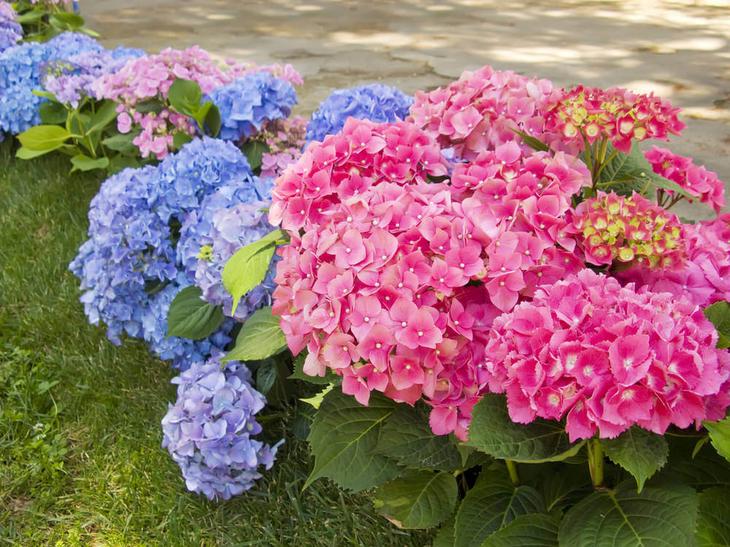

Information! To increase the acidity of heavy soils will help the introduction of iron sulfate, sulfur, ammonia fertilizers.
Experienced florist tips
It is, of course, very beautiful to grow a hydrangea with flowers of different colors on the site, but it is better to do it in containers.First, it makes it easier to control the pH level, and the added components are not washed out. Secondly, the soil is not "spoiled" by the introduction of various additives, since chemical elements can accumulate in the soil. And if in the future edible plants are planted in this place, then it is not a fact that they will be permissible to be eaten.
Most importantly, if the gardener began to maintain the acidity of the soil artificially, then the manipulations must be carried out all summer. The change in acidity is a big stress for plants.
Thus, having planted a white hydrangea in the country, when its color gets bored, you can easily and simply change it to pink, blue or blue. But in everything you need to know when to stop so as not to harm the plant and the site as a whole!
Top dressing for different types of hydrangea
Top dressing for different types of hydrangeas has differences, which must be taken into account in order to obtain a lush flowering bush.
Types of hydrangeas and feeding:
- Paniculata. This species is characterized by increased resistance to frost, has been growing for more than a dozen years, reaching large sizes. Spring feeding with superphosphate (60-80g) and potassium (45g) helps the plant during bud formation. Nitrogen and trace elements in the composition of special fertilizers for hydrangeas help to grow actively.
- Tree-like. This species is demanding for complex feeding and for additional introduction of boron, iron, magnesium. In July, you can feed with nettle infusion, compost is suitable for autumn fertilizers.
- Large-leaved (garden). Superphosphate, potash fertilizers, urea in equal parts are applied in the spring for active growth. The rate per bush is 60g. With the onset of summer, a solution of 1 tbsp is used. l. the drug Agricol in 10 liters of water.
From mid-July, to maintain active flowering, mineral fertilizers are applied in smaller doses, nitrogen is stopped until spring. In the autumn months, humus (peat) is used with the addition of potash-phosphorus fertilizers.
Garden hydrangea reacts actively to complex compounds with potassium (23%), nitrogen (18%), phosphorus (5%).
Hydrangea will be grateful for spring feeding and will delight with flowering until late autumn.
Description of species and the best varieties
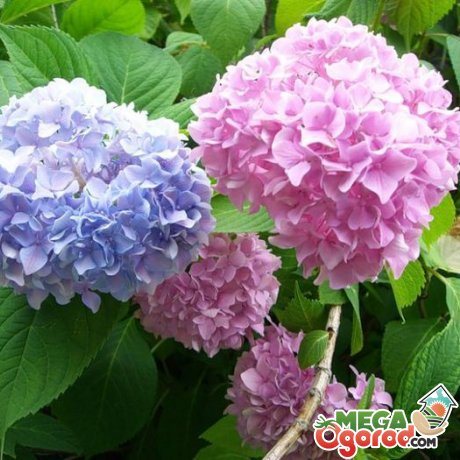

Hydrangea is a separate genus of plants belonging to the Hortensia family. There are about 80 species. Most are shrubs, although there are also small trees and even vines. On Russian sites, three types of shrub hydrangeas can most often be found: paniculate, tree-like and large-leaved "queen of hydrangeas", which is also called garden:
- Hydrangea paniculata (Hydrangea paniculata) is an unpretentious, well-wintering shrub. In our climate, it grows up to 3 meters. Inflorescences are pyramidal (panicle-shaped) can reach 30 cm in length. It blooms in the second half of summer, usually with white flowers, which turn pink by autumn. Most popular varieties: Grandiflora, Vanille Fraise, Lime Light, Great Star. The color of the variety does not change depending on the applied preparations.
- Treelike hydrangea (Hydrangea arborescens) is a shrub up to 1.5 m tall. Unpretentious, drought-resistant, in the middle lane winters without shelter. Blooms from late June to autumn. Compared to paniculate hydrangea, treelike hydrangea has larger leaves. Inflorescences can be up to 30 cm, depending on the variety. Popular varieties: Annabelle, Sterilis, Grandiflora.
- Large-leaved hydrangea (Hydrangea macrophylla) is the most popular plant in European gardens. Breeders have bred varieties of various colors and shapes of flowers: white, pink and blue, red and purple, double and needle-like. There are varieties such as Kardinal, Blue Heaven, Ayesha. However, this beauty is not often found in central Russia, and even more so in the Urals and Siberia. Unlike paniculate and tree-like large-leaved hydrangea, it is a thermophilic shrub that requires good shelter even in the southern regions.
Even if the large-leaved hydrangea has not died in winter, flowering may not occur.The fact is that flower buds of ordinary macrophile varieties are laid on the upper part of the shoots, which suffers from frost the most. And for delicate kidneys, negative temperatures are fatal. However, frost-resistant varieties are now appearing, capable of laying buds and blooming along the entire length of the shoot. These include the magnificent varieties of the Endless Summer, Forever & Ever, You & Me series.
The need for spring feeding


In the spring, like most plants, hydrangea begins the growing season: at this time, young shoots are actively developing, there is an intensive set of young green mass. If the bush does not have enough food, this manifests itself in the following:
- shoots become thin;
- leaves grow sparsely and have a weak color;
- the growth of the bush slows down noticeably.
The presence of these signs indicates the need for feeding, otherwise, if the gardener does not act, the plant will die altogether. Fertilizing in the spring helps to supply the hydrangea with the necessary substances, so during the summer it will develop intensively and bloom profusely. In addition to adding additives, the soil needs to be moistened, especially bushes aged 3 years and older. Mineral and organic fertilizers, as well as complex preparations, are used as spring dressings.
Interesting!
The second name of hydrangea is hydrangea, or in another way: "loving water".
When to apply top dressing, at what temperature
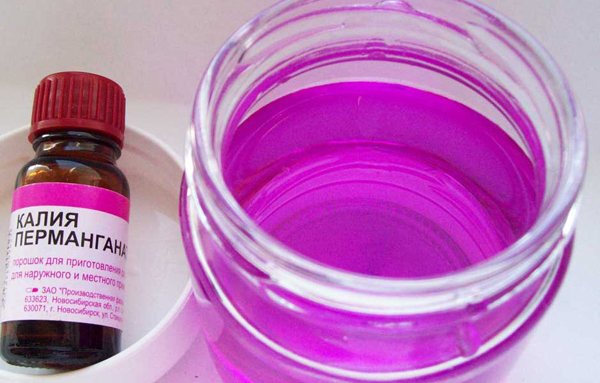

In the spring, hydrangeas need to be fertilized several times, alternating organic fertilizing and mineral complexes. It is recommended to feed the plant for the first time as soon as the snow melts, at slight positive temperatures. At this time, the hydrangea is just beginning to wake up completely from hibernation, fertilization will prepare the shrub for the beginning of the growing season. From the beginning of April to the end of May, manganese is fed three times, which strengthens the wood tissue.
On a note! It is necessary to adhere to the selected feeding scheme and strictly observe the dosage. Too high a concentration of salts leads to disruption of metabolic processes.
Hydrangea paniculata watering rules
Panicle hydrangeas are unable to discolor the corolla, but maintaining a low pH is very important for them. A few simple rules will help you grow a healthy and luxurious hydrangea:
- irrigate the crop twice a week using 40-50 liters of water;
- be guided by the level of natural precipitation;
- the liquid should settle and warm up;
- add the acidifying components listed in the previous section of the article to the water;
- make sure that the droplets of liquid have completely evaporated from the foliage before sunrise. If moisture lingers on the leaves, it will cause sunburn during evaporation.
Yellow leaves in spring
It happens that a hydrangea, waking up from hibernation in the spring, looks weakened, weak, does not release foliage for a long time, and those leaves that have blossomed are for some reason small and yellow.
Don't panic!
The reason lies in the lack of nitrogen.
It is easy to fix it with ammonia.
Mix a couple tablespoons of ammonia solution with 10 liters of water and spray the bush from top to ground. After a couple of days, repeat the treatment.
Attention! Yellowing of the leaves may indicate chlorosis.
Chlorosis hydrangea can get sick with a lack of iron. Perform foliar top dressing with iron-containing preparations (iron vitriol or iron sulfate).
To do this, dissolve ½ teaspoon of these preparations in a liter of water and spray the bush.
Just in case, stick a couple of large nails in the trunk circle. The rust that appears on them in the future will feed the hydrangea with iron.
How often to water a flower
The need for moisture depends on the conditions of detention. Garden varieties, regardless of age, are demanding on a high water content in the soil. But the measure is still worth knowing.Excess liquid, stagnating in the soil, causes rotting of the root system. A combination of high humidity and low temperature provokes the growth of pathogenic fungi.
How not to overdo it with irrigation? The watering rate is up to 50 liters twice a week. In the presence of natural precipitation, keep track of their amount. If the soil is deeply saturated with rainwater, additional irrigation is not required.


Mulch can help reduce the frequency of watering. A layer of peat chips will retain the life-giving liquid, prevent its premature evaporation. Mulched bushes are irrigated every 7-10 days, and even less often with heavy rainfall. In addition to peat, it is permissible to use components that lower the soil pH level as mulch - pine needles, crushed bark, sawdust. After all, the optimal pH level for the development of a shrub will be a pH range from 4 to 6. An alkaline medium is categorically contraindicated in hydrangea.
Attention! Since the culture is decorative until the end of the season, the irrigation regime should not be changed. Otherwise, the buds will fade much faster, the foliage will also lose its decorative effect.
Why is it important to fertilize on time
Hydrangea, or hydrangea, is considered a rather capricious plant among flower growers, and, nevertheless, it can often be found both in flower beds and on home windowsills. It compensates for the demanding long, from late spring to autumn, flowering and huge spherical inflorescences of different colors. For lush flowering and active growth, hydrangeas are regularly fed throughout the season.
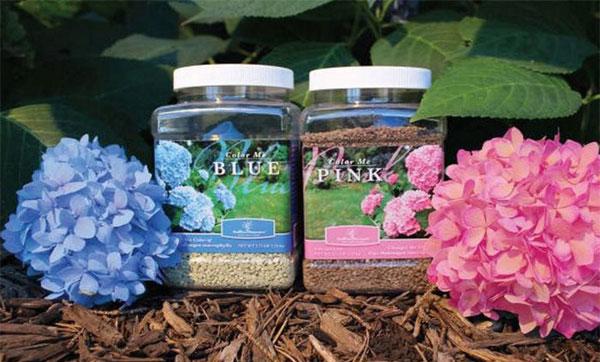

Without adequate nutrition, when the root system does not receive the necessary minerals, the leaves grow dull and wilted, because they have to "feed" the inflorescences; the buds become smaller, they bloom faster, and their number decreases. In the slang of florists, the situation can be described as follows - "the bush did not stretch the flowering."
Correct and timely feeding of hydrangeas:
- promotes uniform active growth of green mass;
- provides abundant and long-lasting flowering;
- promotes a brighter, more saturated color of inflorescences;
- strengthens the immune system;
- helps the bush to survive the winter.
Today, there are no problems with purchasing fertilizers - they can be found in the assortment on the shelves of any specialized stores.
To choose the right one, you need to understand what substances the plant needs:
- Nitrogen - contributes to a set of green mass. With its lack, the remaining microelements cease to be absorbed.
- Phosphorus - "responsible" for budding and flowering, helps the plant to fight fungal diseases.
- Potassium is the basis of "immunity", with a sufficient amount it helps the plant to survive adverse conditions.
- Magnesium - affects the color of the petals. It is important during the budding period, with a lack of it, the ovaries crumble.
- Iron - is necessary for the formation of immunity and uniform color of the leaves.
Depending on the growth phase, top dressing is chosen with a predominance of the necessary microelements.
What to water
Many experts point out that hydrangea should be watered with rainwater. But this statement applies more to varieties grown outdoors. But for indoor plants, you should use settled water. Do not water with cold water. It is best to use settled water at room temperature so as not to shock the flower.
So, in terms of watering, this type of indoor plant has the following rules:
- soft water is used for irrigation. If rainwater is not available, then simply boil tap water. You can just defend it well;
- the water temperature should not be too cold or warm. A great option is room temperature.
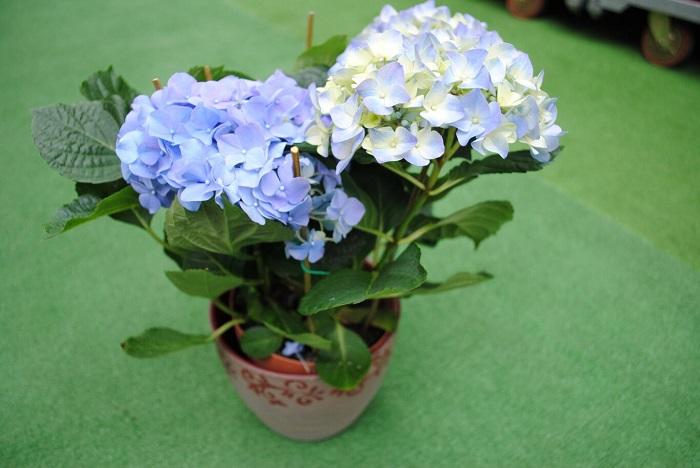

Separately, it should be noted that by changing the characteristics of the water for irrigation, it is possible to achieve a change in the color of the buds. For example, this way you can get a pink or blue color of the inflorescences. Most often, growers strive to get the blue color of the buds. To do this, there must be aluminum in the soil, and in a form accessible to the plant. Such conditions are possible if there is an acidic reaction in the soil (pH not lower than 5.5).
In this case, additional introduction of the element itself is required. It can be added together with water in the composition of aluminum sulfate (15 g / l). It is necessary to add this substance to the water throughout the growing season. Potassium salts can often be used instead of aluminum sulfate. To achieve the desired result, you need to slightly moisten the soil with plain clean water before watering. Using different substances in watering, you can achieve flowering with pink buds.


